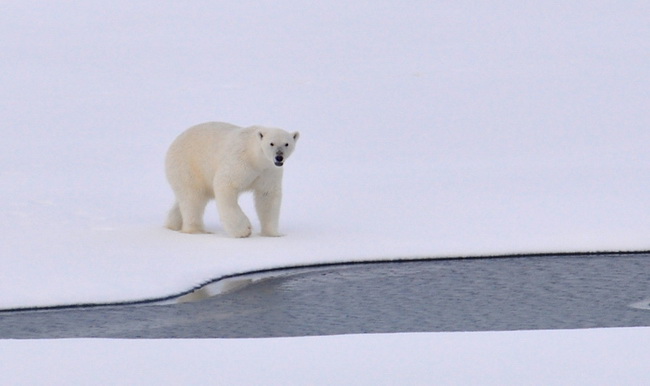Being the northernmost region of the Earth, the Arctic provides 20% of the world’s freshwater. When you’re on a trip to discover the wonders of the Arctic, sightings of its wildlife are an experience you can’t miss out on.
Ever thought of what you can see in the Arctic aside from its extraordinary frozen land?
Being the northernmost region of the Earth, the Arctic provides 20% of the world’s freshwater. When you’re on a trip to discover the wonders of the Arctic, sightings of its wildlife are an experience you can’t miss out on. Here, we have five animals you can catch a glimpse of when you’re on an arctic cruise’s observation deck!
Animals in the Arctic
During your journey to the Arctic, bringing your own binoculars is strongly recommended so you can freely observe the animals closely. The likelihood of seeing individual animals, however, highly depends on your cruise’s route.
In most cruises, marine biologists will also be present. They will offer the passengers more information about any animals they might encounter, even explaining how and why they behave the way they do.
1. Whales
One of the best places for whale-watching, the Arctic is home to three different species of whale.
Bowhead whales have a length of up to 20 meters and weigh close to 150 tons, making them the fifth-largest mammal in the world. Some of them can be as old as 200 years, and even with their weight, they can still jump off the water! Bowhead Whales also use underwater vocalizations to communicate with each other.
Beluga comes from the Russian word “belyj,” which can be directly translated to “white.” They can easily be identified because of their color and rounded head. Newborns are colored grey that completely turns white as they age.
Dubbed as the "canaries of the sea," beluga whales also communicate and navigate through sounds. They can also change the shape of their head by blowing around their sinuses.
Narwhals, also known as “the unicorns of the sea,” are famous because of their protruding canine tooth that looks like a tusk that can reach up to two meters. Both male and female Narwhals can grow their tusks, but it’s more prominent in males. There is still no definite purpose why Narwhals have these tusks, but most believe that they are used in these whales’ mating rituals.
They are grey and mottled and travel in small groups, like the beluga, and prey on shrimps, squids, and fishes.
2. Walruses
Aside from their mustaches and long, white tusks that can grow up to three feet, walruses are also famous for being friendly mammals — often huddled in big and noisy groups. They can be found on ice with many other walruses or lying at the beach.
Both male and female walruses grow tusks. These tusks help them survive the Arctic. Such as pulling themselves out of the water or penetrating holes into ice for breathing.
They also use these tusks to search for clams on the ocean floor, protect their territory or harem, and defend themselves against polar bears.
3. Reindeers
Another name for the reindeer is caribou, and it’s the only species of deer where the male and female both have antlers. These antlers are regrown each year and are the heaviest compared to other reindeer species.
Antlers grow up to two centimeters a day, covered in soft fur at their earliest stage. This fur slowly dries out and rubs off as time passes, revealing the bone underneath. Male reindeer’s antlers can reach up to 51 inches, while the female ones can grow up to 20 inches.
Reindeers can be seen in most Arctic places, but they are mainly in Svalbard. Their fur changes color in line with the season, turning to brown in summer and white when it’s fall or spring.
4. Arctic foxes
Most arctic foxes have white coats to blend in during winter. Some even have blue-grey fur that turns to grayish brown in summer to mix with plants and rocks. They can survive temperatures that are as low as –58°F, using their tail for both balance and warmth.
These mammals eat anything — rodents, birds, fish, eggs, vegetables, even scraps from the meals left behind by polar bears like seals’ remains. Because of their fur changes and camouflage, it is tricky to spot arctic foxes.
5. Polar bears
The most famous resident in the Arctic is the polar bear. It is not only the world’s largest bear but also the Arctic’s top predator. Red-triangle warning signs of where they traverse are left behind to alert anyone who might come across their territory. These signs will be helpful to anyone who’s in search of a polar bear sighting.
In winter, polar bears hunt on the ice while they can be spotted coursing in secluded shorelines that are away from roads during summers.
Sadly, polar bears’ sightings have declined, and they’ve become rare, especially in recent years with the threat of climate change.
The Arctic is waiting for you!
There are not enough words to describe the beauty of each and every wildlife living in this frozen tundra. So, come and find it out yourself! All these animals are waiting for you to visit them in the Arctic.
Image from Pexels.com
































































































































































































































